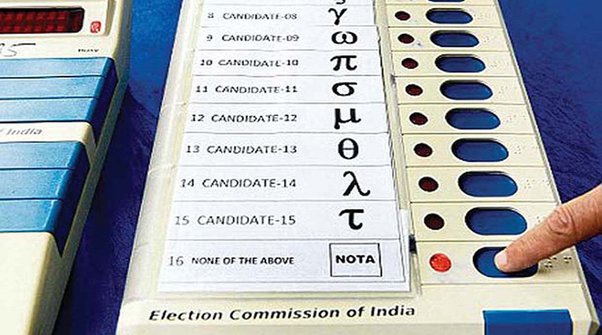More than ten years since the introduction of the “None of the Above” (NOTA) option on Electronic Voting Machines (EVMs) in India, the number of voters choosing this option remains relatively low. Introduced through a Supreme Court judgment in September 2013, NOTA was designed to allow voters to express their dissatisfaction by choosing none of the candidates in the fray, particularly to discourage political parties from fielding candidates with tainted backgrounds.
NOTA has its own symbol—a ballot paper with a black cross across it—and was added as the last option on the voting panel of EVMs. Before its introduction, voters not inclined to vote for any candidate could fill out Form 49O, but this compromised the secrecy of the vote.
Despite NOTA securing over 1.29 crore votes in State Assembly and Lok Sabha elections combined over the last five years, experts argue that it remains a “toothless tiger” with no significant implications on election outcomes. The purpose of introducing NOTA was to encourage political parties to nominate cleaner candidates, but the number of candidates with criminal records has increased over the years, according to a report by the Association for Democratic Reforms (ADR). The share of elected Members of Parliament (MPs) with declared criminal cases against them has been on the rise, from 30% in 2009 to higher figures in subsequent elections.






